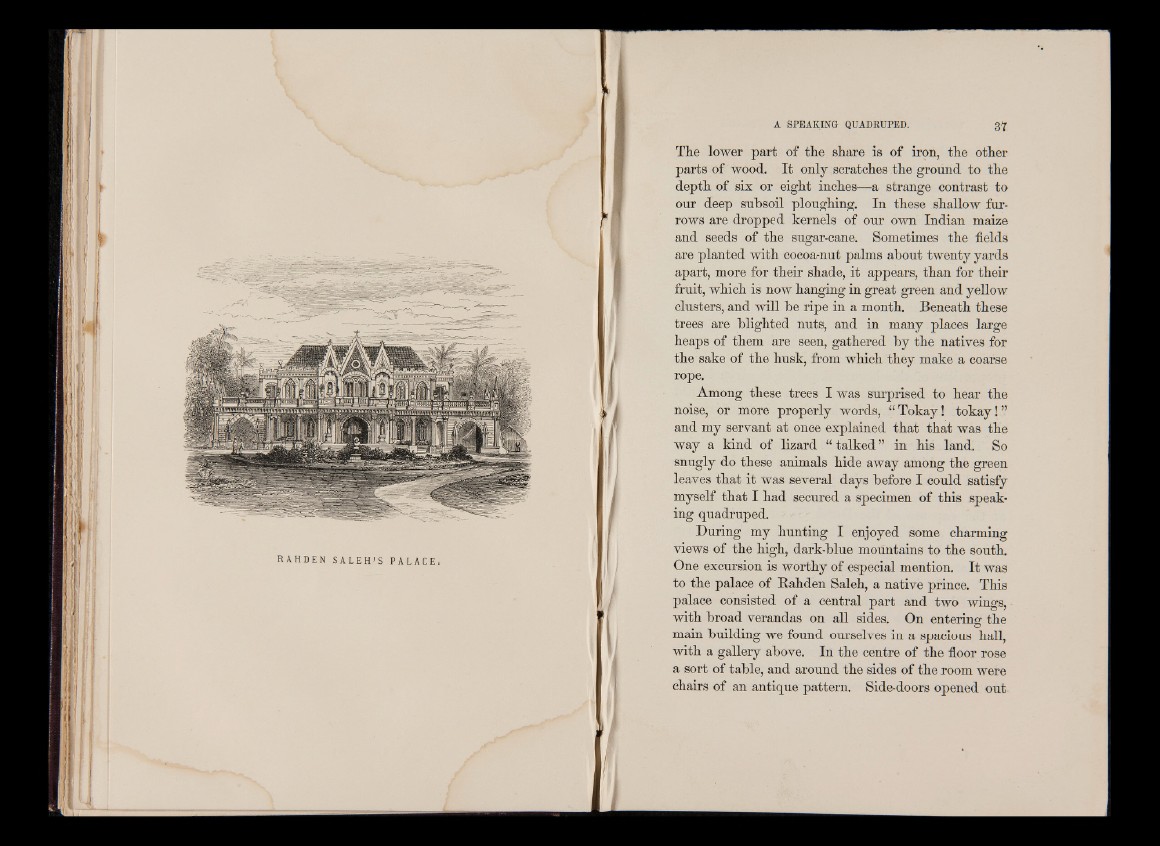
The lower part of the share is of iron, the other
parts of wood. It only scratches the ground to the
depth of six or eight inches—a strange contrast to
our deep subsoil ploughing. In these shallow furrows
are dropped kernels of our own Indian maize
and seeds of the sugar-cane. Sometimes the fields
are planted with cocoa-nut palms about twenty yards
apart, more for their shade, it appears, than for their
fruit, which is now hanging in great green and yellow
clusters, and will be ripe in a month. Beneath these
trees are blighted nuts, and in many places large
heaps of them are seen, gathered by the natives for
the sake of the husk, from which they make a coarse
rope.
Among these trees I was surprised to hear the
noise, or more properly words, “ Tokay! tokay! ”
and my servant at once explained that that was the
way a kind of lizard “ talked ” in his land. So
snugly do these animals hide away among the green
leaves that it was several days before I could satisfy
myself that I had secured a specimen of this speaking
quadruped.
During my hunting I enjoyed some charming
views of the high, dark-blue mountains to the south.
One excursion is worthy of especial mention. It was
to the palace of Rahden Saleh, a native prince. This
palace consisted of a central part and two wings,
with broad verandas on all sides. On entering- the
main building we found ourselves in a spacious hall,
with a gallery above. In the centre of the floor rose
a sort of table, and around the sides of the room were
chairs of an antique pattern. Side-doors opened out